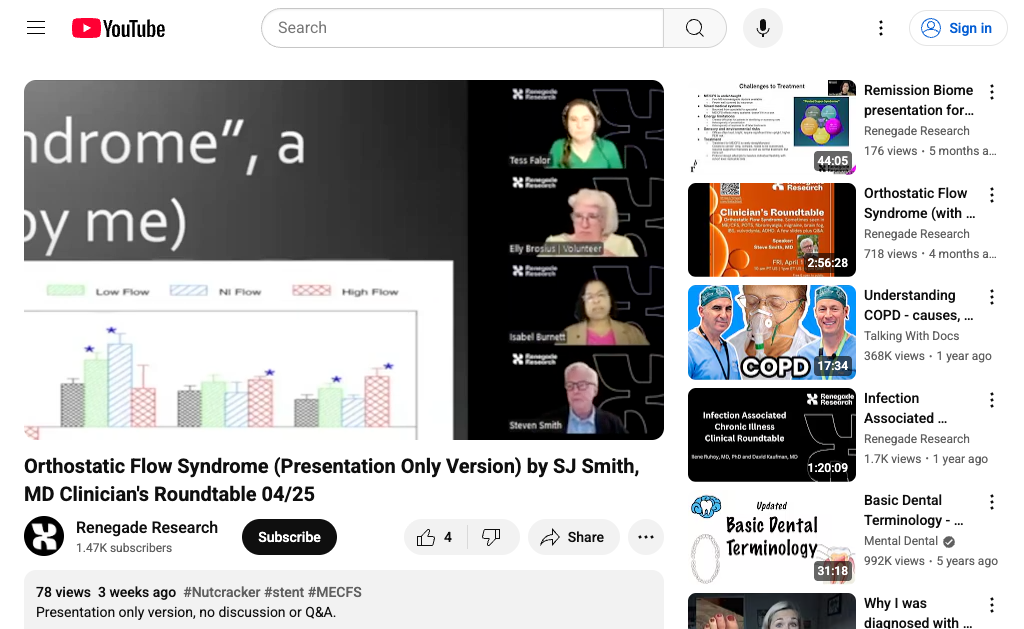Orthostatic Flow Syndrome (Presentation Only Version) by SJ Smith, MD Clinician's Roundtable 04/25
Dr. Steven J. Smith proposes that a subset of POTS and overlapping conditions (ME/CFS, long COVID, migraine, brain fog, IBS, interstitial cystitis, pelvic pain) share a venous outflow/insufficiency problem he terms Orthostatic Flow Syndrome. He details how pelvic and abdominal venous disorders—such as pelvic congestion, May-Thurner (iliac vein compression), and Nutcracker (renal vein compression)—can impair return flow, drive orthostatic intolerance, and trigger neuropeptide release (CGRP, Substance P) linked to pain, migraine, and cognitive symptoms. He outlines a practical diagnostic approach: targeted history for “vein-pain” features, focused physical exam, and imaging (MRV/MRA, CTA, duplex, and intravascular ultrasound) to detect varices, reflux, or compressions that standard studies may miss. Case series and multi-center observational data suggest that interventional radiology treatments (embolization of refluxing pelvic veins and stenting of significant compressions) can improve orthostatic intolerance and multiple comorbid symptoms at 3, 6, and 12 months. The talk includes a proposed flow chart for a vascular mechanism of orthostatic intolerance and emphasizes careful patient selection, objective imaging confirmation, and collaboration between IR and clinicians caring for POTS/IC patients, while noting the current evidence base is largely observational and needs randomized trials.
